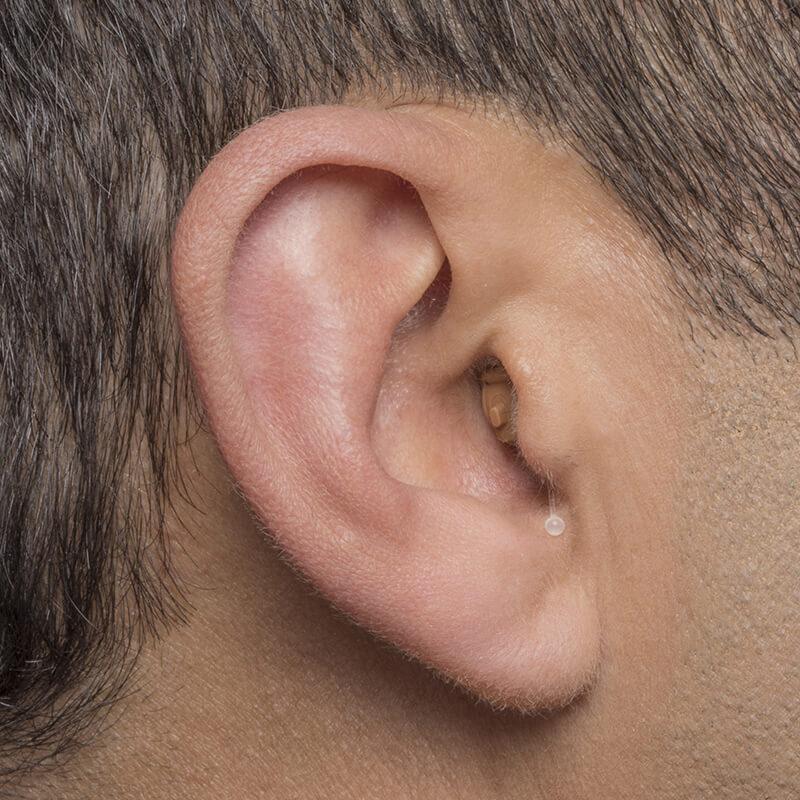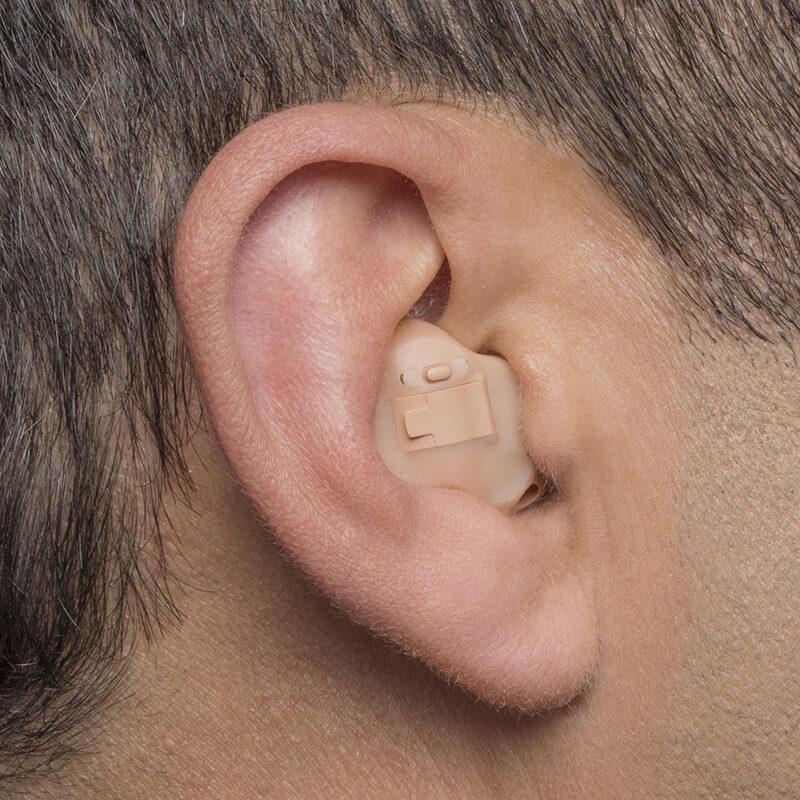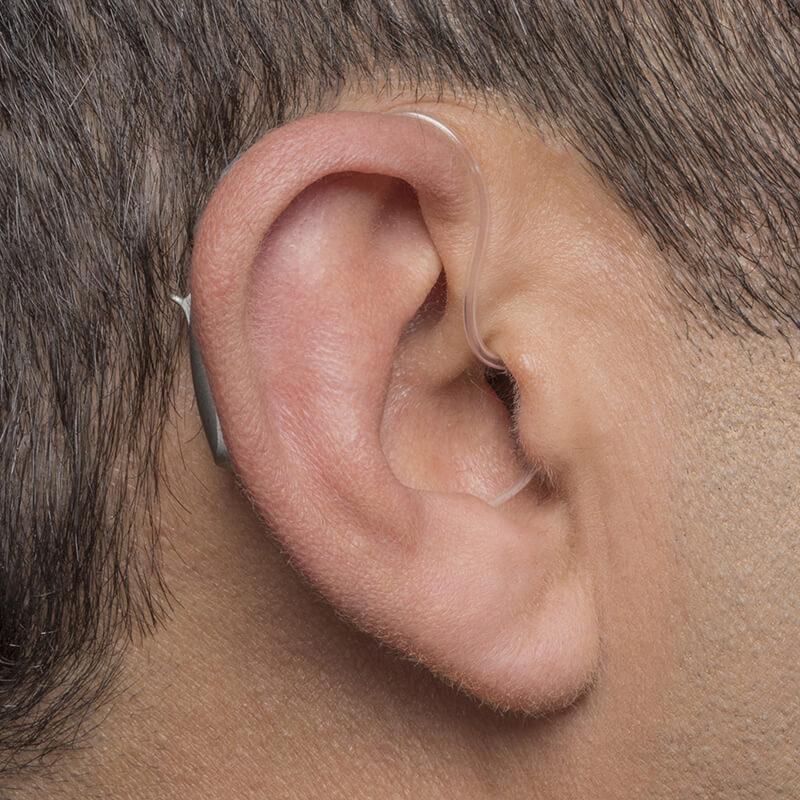- The Emotional Journey of Accepting Hearing Loss - October 25, 2024
- Making a Style Statement with Hearing Aids This Fall - October 15, 2024
- Fireplace Safety and Hearing aids - October 4, 2024
Hearing aids come in numerous shapes and sizes and there are many factors to consider when determining which style of hearing aid will work best for you. The style of the hearing aid will affect what the hearing aid looks like and what it feels like in your ear. It will also affect the hearing aid’s battery life, and how easy the hearing aid is to manipulate and maintenance. In general, the style of the hearing aid is not what makes it more or less expensive. The cost of a hearing aid is based on the sophistication of its sound processing microchip. Below we’ll discuss some of the pros and cons of the various hearing aid styles.
Invisible-in-the-canal (IIC) and Completely-in-the-canal (CIC): These two hearing aids types are the smallest of the in-the-ear styles. Both fit completely down into the ear canal and are virtually invisible, making them very cosmetically appealing. Also, due to the deep fitting, the microphone of an IIC or CIC is sheltered from bothersome wind noise and perspiration. These styles maintain the outer ear’s natural resonance and directionality. The disadvantage of these types of hearing aids is that they and their batteries are very small, so they can be difficult for people with vision or dexterity problems to manipulate and maintain.
- In-the canal (ITC) and Half-shell (HS): These two hearing aid styles fit into the bowl of the ear and are somewhat visible. They are large enough to be fitted with directional microphones, which enables the user to take advantage of more sophisticated noise reduction features. Also, since they are slightly larger than an IIC or CIC they can be easier to manipulate and maintain.
Full-shell (FS): This style of hearing aid is the largest of the in-the-ear types; it fills the entire ear bowl and is very visible. Its size makes it easier for people with vision or dexterity problems to manipulate and maintain. It uses a larger battery which is easier to change and lasts longer than those used by the smaller in-the-ear styles. They also have directional microphones. The FS style is large enough to hold a powerful amplifier, so it can be a good choice for people with severe hearing loss.
- Traditional Behind-the-ear (BTE): This style of behind-the-ear hearing aid uses a custom earpiece to bring the sound from the processor behind the ear into the ear canal. There are no electronics in the ear canal, which makes this style one of the easiest to maintain and an excellent choice for people with excessive earwax. This is also the most versatile style of hearing aid; it can be purchased to fit any severity of hearing loss, from mild to profound. BTE hearing aids have directional microphones. Many hearing aids in this style are available in water resistant models to protect the hearing aids from rain and perspiration. The Traditional BTE is the largest of the behind-the-ear styles and therefore it is the most visible and easiest to manipulate.
Open-fit Behind-the-ear (OTE): Open-fit behind-the-ear hearing aids use a thin tube to bring the sound from the processor behind the ear into the ear canal. This is an excellent style for patients seeking a transparent feeling hearing aid that does not “plug up” their ear. OTEs are also one of the least visible styles of hearing aid available. Like their Traditional BTE cousins, they have no electronics in the ear canal, so they are also an excellent choice for people with excessive earwax. They have directional microphones. OTEs, because of their open fitting nature, are generally not a good choice for people with severe to profound hearing loss because too much sound is allowed to escape, resulting in feedback or whistling noise from the hearing aid and poor sound quality. They can also be difficult for people with poor dexterity to manipulate and maintain.
- Receiver-in-the-ear (RIC): Receiver-in-the-ear hearing aids use a thin wire to connect the sound processor behind the ear to the speaker of the hearing aid which is placed in the ear canal. This style is very versatile and can be fit in an open configuration for mild or high frequency hearing losses or a closed configuration with a custom earpiece for severe hearing losses. RICs also have directional microphones. Like the OTE, the RIC is very cosmetically appealing, but can be difficult for people with dexterity problems to manipulate.
There is no one size fits all when it comes to hearing aids. We offer a complimentary hearing evaluation and consultation to help you determine which hearing aid style is best for your unique hearing loss and lifestyle needs. Call today to schedule your appointment. We look forward to helping you get started on the road to better hearing!

 Invisible-in-the-canal (IIC)
Invisible-in-the-canal (IIC)
 Open-fit Behind-the-ear (OTE)
Open-fit Behind-the-ear (OTE)